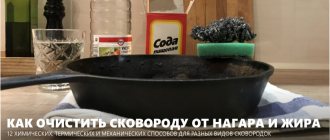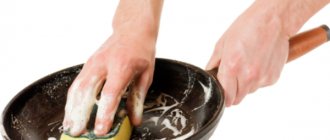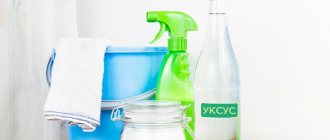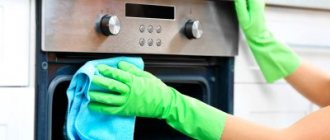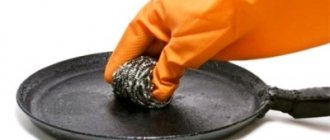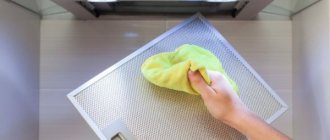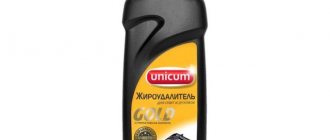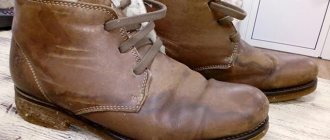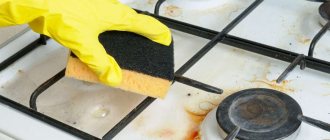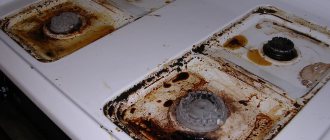After prolonged use, kitchen utensils develop carbon deposits and a coating of fat in which bacteria can accumulate. Soot and deposits deteriorate the appearance of the dishes. Because of them, food begins to burn during cooking and the taste of the cooked dish spoils. Housewives try to solve this problem by soaking dishes in a soapy solution, but this method is ineffective. The expected result can be achieved by using special chemicals and folk remedies.
How to wash dishes from plaque - folk remedies
Dishes that have lost their original shine after many years of use require high-quality cleaning. It often happens that many years of carbon deposits cannot be eliminated by soaking the dishes in soap and water. And then housewives think about what remedy to use to solve the problem.
It is important to remember that not all kitchen utensils can withstand cleaning with modern chemicals designed for washing dishes. It is not recommended to clean ceramic products or those with a special coating using household chemicals. It corrodes the coating and renders the dishes non-functional.
As for folk remedies, they have a milder effect and are suitable for any kitchen item.
Important!
If you are faced with a problem related to cleaning dishes, first understand what they are made of. After all, metals do not react equally to folk cleaning products. Salt, for example, has a harmful effect on stainless steel, and acid is very dangerous for enamel cookware.
Laundry soap
This product is considered one of the best when it becomes necessary to free dishes from grease deposits that have settled inside. To prepare the cleaning solution, use laundry soap and water.
Cleaning work is carried out according to the following algorithm:
- half a bar of soap is crushed on a coarse grater;
- crushed pieces of soap are placed in a contaminated container and filled with water, not bringing its level 5 cm to the edge;
- place the dishes on the fire, bring the composition to a boil, which should last 30 minutes over low heat;
- then the heating is stopped, the container is covered with a lid and waited for cooling;
- The cooled solution is drained and the dishes are cleaned with a sponge.
This method is considered delicate because it does not harm the coating. It is recommended to practice it when cleaning Teflon dishes and ceramic items.
Vinegar and citric acid
A composition containing these ingredients successfully cleans kitchen utensils made of aluminum and stainless steel. But such a cleaning solution is absolutely unsuitable for samples with an enamel coating.
The cleaning composition is prepared as follows:
- pour 1 liter of water into the pan, place it on the fire and bring to a boil;
- 120 ml of 9% vinegar and 25 g of citric acid are dissolved in heated water;
- Place dirty dishes in this solution for 1 hour.
After this time, all that remains is to remove the fat with a synthetic washcloth. Thanks to this composition, even old fat easily comes off the walls of the dishes.
PVA glue and laundry soap
To free pots or pans with the most problematic stains from multi-layered black soot and fat, a composition consisting of PVA glue and soap is good. This method can be used to clean dishes made from any materials.
The cleaning process includes the following steps:
- pour 4 liters of water into a basin;
- add half a bar of laundry soap, crushed into shavings;
- add 1 tbsp. l PVA glue;
- mix the ingredients of the solution and boil the contaminated dishes in it for 50 minutes;
- remove traces of carbon deposits with a metal sponge or a soft sponge if the dishes are covered with enamel.
Soda
Soda is used to clean dishes made of stainless steel or enamel. If you use baking soda on aluminum cookware, the walls may become darkened by this material. Soda can be used to wash the inside of the pan from burnt food and the outside from deposited soot or fat.
The cleanup work will consist of the following stages:
- prepare a metal basin;
- pour 6 liters of boiling water into it;
- add 450 g of soda there;
- place a dirty saucepan or frying pan in the container;
- put on fire, bring to a boil and boil for 1 hour;
- turn off the gas and wait until the solution cools;
- remove dirty dishes from the container and remove traces of grease with a sponge;
- Rinse the dishes with heated water.
Salt
Use ordinary salt to clean minor stains on aluminum dishes or enamel-coated items. However, it is not recommended to clean stainless steel utensils with salt. Salt causes steel to darken and subsequently corrode.
During the cleaning process, salt is applied to a sponge and rubbed against the bottom and walls of a pot or pan.
You can also use another recipe:
- the pan, contaminated from the inside, is filled with a strong salt solution;
- put on fire and boil for at least 1 hour;
- wipe with a damp sponge and rinse with water.
In the case when it is necessary to clean carbon deposits and fat on the outside of the pan, place it in a large container with saline solution and boil it.
Mustard powder
You can free dishes from greasy deposits by using mustard powder. To do this, do the following:
- put the dirty dishes on the fire and heat them;
- scald the pan with boiling water;
- pour several packets of dry mustard inside and fill it with water;
- periodically stir the composition with a wooden spatula for 3 hours, trying to scrape off old fat;
- then wash the dishes with a sponge and detergent;
- Rinse the dishes with water.
To clean glass or ceramic dishes, use a composition consisting of 1 liter. hot water and 250 g mustard powder. The pan is filled with this solution, then left for 24 hours. During this period, complete detachment of fat occurs, and it is easily removed with a sponge.
Activated carbon
To clean dirty dishes from burning, you can independently prepare a universal product based on activated carbon. For this you will need 10 tablets.
The recipe is as follows:
- crush charcoal tablets and pour the powder onto the damp bottom of a pot or frying pan;
- wait for 1 hour;
- Wash the dishes with a sponge using your usual detergent.
This option may be useful while staying at the dacha, where other means may not be at hand.
Vegetable oil and soap
If the grease deposit on the dishes is not old, you need to make a hot composition according to the following recipe:
- take half a piece of tar soap and grind it;
- Place soap shavings in a dirty pan and fill it with 100 ml. boiling water;
- stir until the soap dissolves, and then add 60 ml to the composition. vegetable oil;
- Stir the mixture again and add about 200 g of baking soda to achieve a mushy state;
- scald the pan with boiling water;
- put the container on the fire and heat the composition;
- wait 1 hour and remove the exfoliated plaque with a sponge;
- Rinse the dishes.
Hydrogen peroxide
You can wash dishes with layers of smoke and grease on the outside if you prepare a special paste yourself. It is made according to this recipe:
- take half a glass of soda and add enough hydrogen peroxide to it to get the consistency of sour cream;
- Spread this mixture on the bottom and walls of the dish;
- cover the dishes with polyethylene film and leave the composition for 35 minutes;
- Using a sponge or brush, wash the softened carbon deposits under the tap.
Hydrogen peroxide
- Make a solution: 3 tablespoons of soda for 2 liters of water.
- Put a lid in it and put it on fire, you need to make sure that there are no wooden or plastic parts.
- Boil for half an hour, cool.
- After this, clean the lid with regular detergent and a sponge; the grease will come off easily.
- Rinse under water.
Carbon deposits on the outside can be achieved using hydrogen peroxide. To do this, add it to baking soda in such an amount that it forms a consistency similar to sour cream. The resulting paste should be carefully applied to the problem areas and left to soak for 35 minutes. Additionally, you can wrap the walls with cling film to achieve a better effect. After 35 minutes, you can wash off the softened carbon deposits in the usual way.
Citric acid and vinegar
First, remove any plastic parts from the lid that may be damaged by acid. Fill a large saucepan with water, put the lid on it and add 1 cup. vinegar 9% and 25 g of citric acid. Boil the solution for 30 minutes, then clean the lid with a wire brush and rinse with water.
Now your lids will shine, even if they are many years old! Clean utensils make cooking more enjoyable, right? In addition, you don’t need expensive products for cleaning - everything is already in your home. Do you know how to clean a glass lid with a metal rim ? Share your secrets!
How to wash plates from yellow plaque
A yellow coating may form on plates and other kitchen utensils when used for a long time. In fact, it is not completely washed fat left after eating. It is quite easy to wash it using folk remedies. Here are some remedies that will help solve the problem.
- Baking soda . It has properties that make it in no way inferior to popular detergents. Pour it onto the dirty area and rub with a sponge.
- Lemon acid . Yellow deposits on dishes can be easily removed with citric acid. Apply the liquid to the contaminated area and leave without action for 22 minutes. Then all you have to do is rinse the plate with water.
- Mustard powder . This substance can also be useful when there is a need to eliminate old fat. To achieve the result, dilute the mustard in heated water and place the dishes there for 40 minutes. Then all that remains is to clean the problem area with a sponge.
Important!
Kitchen utensils made of earthenware or porcelain should not be cleaned with abrasive materials. They may leave marks on fragile surfaces.
Mustard
- For glass, only liquid, gel-like compositions are used (dry powders destroy the shine of wine glasses, glasses and other kitchen utensils made of glass).
- A detergent with a light citrus, fruit or floral aroma is more effective in combating unpleasant odors on glass surfaces (the exception is those with strong chemical odors, which should be avoided).
- The best products are those that contain enzymes, organic natural active substances, alcohol, essential oils (the fewer synthetic additives in the composition, the safer the chosen product is for human health).
It is better to wash off carbon deposits from dishes with hot water. After this, the dishes are wiped dry.
Folk remedies Recipes for masks At home Hair loss in women How to stimulate growth Causes of hair loss Hair loss in men Review of vitamins Helpful tips
How to remove old grease from dishes
To prevent fat from being deposited in layers on the dishes, they must be washed immediately after each meal. If you don’t have the opportunity or desire to wash the dishes after dinner, soak the plates in warm water after adding detergent. Fat will not be able to harden on the bottom and walls of the plates. The detergent will partially dissolve the grease overnight, and in the morning you can easily wash all the dishes until they shine.
Washed dishes must be wiped with a dry towel to remove any remaining moisture. Thanks to this you can avoid corrosion.
Important!
The frying pan needs to be washed after each use, and not expect a condition where its walls become thicker due to the appearance of black soot.
Old fat deposits should be removed using store-bought chemicals. There is a wide range of detergent compositions available on the modern market. When cleaning utensils from old fat layers, apply the purchased product to the dirty area and wait for some time specified in the instructions. Then all that remains is to remove the grease with a sponge or brush.
The next time you buy a detergent, carefully read the instructions. Not all of them are suitable for use on aluminum cookware or items coated with Teflon.
How to clean grease from plastic dishes
Plastic is an unpretentious material, but this does not mean that when cleaning it you can use hard sponges and brushes, as well as alkaline products and objects containing abrasive particles. They can form scratches on the walls of the dishes, in which bacteria can multiply.
To wash such dishes, use warm water, liquid soap or some kind of dishwashing detergent. Water should not be heated above 70 degrees, otherwise small cracks will appear on the dishes.
If the kitchen utensils are made of heat-resistant plastic, you can use the dishwasher, but only if this is allowed by the manufacturer.
Attention!
Dried food can be easily removed from plastic dishes by soaking them in warm water for 30 minutes, adding 2-3 drops of detergent.
As we already understood, removing grease from plastic dishes does not cause problems. But in order to remove the unpleasant odor, which firmly eats into the walls of the vessel, you will need to work hard. To solve the problem, use one of the methods below.
- Pour 200 ml of heated water, 100 ml of 9% vinegar and 3 drops of detergent into a plastic container. Close it with a lid, shake for 1 minute and do not touch for 50 minutes. Then drain the cleaning solution and rinse with water.
- Mix baking soda and heated water to form a paste consistency. Coat the walls of plastic kitchen utensils with this mixture. Leave them like this overnight. In the morning, all you have to do is wash off the remaining baking soda with cold water.
- Throw 6 tablets of activated carbon into the container, cover it with a lid for 2 hours. During this time, the tablets will absorb all the smell.
- Moisten the inner walls of the container with lemon juice and leave to air for 3 hours. Then rinse it with water.
Boiling with vinegar and citric acid
This method is suitable for enamel or metal lids. It helps to get rid of even old fat, especially on the edges and around the handles. Only if they have plastic parts, they need to be removed first.
- Find a saucepan or basin so that the lid fits completely.
- Pour water, add a glass of 9% vinegar and 25 g of citric acid powder for each liter.
- Bring to a boil, put a lid on it.
- Cook over low heat for half an hour.
- After cooling, wash off the grease with a brush or sponge.
How to clean oven glassware from carbon deposits
You need to rinse the dishes with this solution, then rinse them thoroughly with cool water. After removing the stains, all that remains is to place the container upside down on a towel and wait until it is completely dry.
Expert opinion
Ksenia Diyanova, expert on beauty, purity, harmony
Ask me any questions, I will be happy to answer!
After completing the procedure, it is recommended to leave the oven door open for several hours to remove the smell of soap or cleaning product. A rich, bright pink solution of potassium permanganate not only disinfects the surface, but also removes the pronounced swamp smell. Composition with laundry soap Ask me all your questions, I will be happy to answer!
How to wash old dishes
As cups, bowls and mugs are used, they sooner or later acquire a yellow coating. It occurs for the following reasons:
- tap water contains a lot of metal salts;
- use of low-quality cleaning products;
- hastily washing in low temperature water;
- washing dishes without proper diligence.
You can eliminate yellowness if you use purchased products. It will be even better and cheaper if you use the home remedies listed below to clean the dishes.
- Baking soda solution . Place the dirty dishes in a basin and fill them with hot soda solution (3 tablespoons of solution per 1 liter of water). Soak kitchen items in the liquid for 1 hour. Then rinse them with a sponge under tap water.
- Dry mustard . This product is highly environmentally friendly. Plates, mugs and scoops are placed in a basin with warm water for 50 minutes, after adding 4 tbsp. spoons of dry mustard. Finally, wash the dishes with a sponge.
- Hydrogen peroxide with soda . These components are mixed in equal proportions. After that, apply the composition to the dirty dishes with a sponge and rinse with water. This composition is able to clean any dirt to a shine.
Important!
The use of home remedies allows you to save the family budget. Their prices are low and they are available to everyone. Moreover, they will not harm your health.
Ideal composition for getting rid of dirt on glass lids
The whole problem lies in the iron edging that secures the lid to the frying pan or saucepan. Dirt and grease get into the narrow gap, which can be problematic to wash off with a regular sponge and detergents. Using our method, you can eliminate such difficulties in just a few minutes.
- 10 ml hydrogen peroxide;
- sharp knife (a toothpick will also work);
- baking soda;
- clean napkins or cloths;
- brush.
- Turn the lid over and pour a little hydrogen peroxide under the rim.
PHOTO: udivitelno.fun Treat the entire rim with peroxide
- Twist the lid so that the peroxide is distributed under the rim.
- After 15 minutes, pour 1 tbsp evenly under the rim. spoon of baking soda.
- Use a brush to spread the baking soda into hard-to-reach places; the powder should get into the crack.
PHOTO: udivitelno.fun Using a brush with stiff bristles, spread the soda over the rim. Take a sharp knife that fits into the gap, place a cloth on the tip and clean the rim from fatty deposits. Periodically change the napkin for a clean one.
PHOTO: udivitelno.fun Instead of a knife, you can use a toothpick
- All contaminants come off the lid perfectly.
- In the sink, use a sponge and detergent to finish washing the lid and rinse with clean water.
PHOTO: udivitelno.fun Wash the surface with detergent
PHOTO: udivitelno.funThe glass will shine like new
This method allows you to manually clean the rim of the glass lid from dirt without much effort. In addition, this is also the most budget option, since it does not require financial costs.
Advice! You can first disassemble the lid by unscrewing the handle. This will help clean the entire surface with almost no effort.
Related article:
Read how to clean a frying pan from old carbon deposits , what household chemicals and folk recipes are best to use depending on the type of surface.
How to remove grease from glassware
Glassware is quite common in modern kitchens. Glass does not react in any way to food, does not decompose from acids and scale, is not afraid of rust and does not absorb odors.
But the care of such dishes should be special. You can clean glass kitchen items using one of the options below.
- Food foil and soap . Take a piece of this material and scrunch it up. Hold the dishes under running hot water and rub them with foil at the same time. Then use a soapy sponge to wash away traces of grease. Finally, the dishes will need to be rinsed in heated water and dried.
- Ammonia . Pour 5 liters of heated water into a basin, and then another 5 tsp. ammonia. After washing dishes in this solution, wipe them dry with a flannel cloth without rinsing.
- Mustard powder . Pour 3 liters of heated water into a basin and pour 2 tsp into it. mustard powder. Soak glassware in this liquid mixture for 7 minutes. Remove the dishes from the basin, wipe them with flannel and rinse with water.
- Table vinegar . Pour heated water from the tap into the sink. Add 2 tbsp. l. 9% vinegar. Wash dishes in this solution for 2 minutes. Dip the dishes in water and dry them.
- Eggshell . Chicken egg shells help effectively free glass items from carbon deposits or deposits. Crush the material into powder and pour it into dirty dishes, adding a portion of soapy water. With this mixture you can easily scrub the walls of the dishes.
- Potato chips . If you need to clean a glass bottle or jar from grease and dirt, this can easily be done with potato chips. In application, this method is very similar to the previous one.
- Baking soda . Place the dishes in heated water. Sprinkle a pinch of baking soda onto a sponge moistened with water. Wipe stained areas until results are achieved. Dip items in water and dry.
- Salt. Washing such dishes in salted water does not lead to streaks and returns shine to the items. Pour 3 liters of heated water into the basin. Dissolve 3 tbsp in liquid. l. salt and mix the mixture. Wash the glassware with the solution, then dry it without wiping.
Attention! Remember that baking soda is not afraid of any stains on glassware, and the use of salt or ammonia will help restore items to their original shine.
Competent care
Glassware can always remain beautiful if you follow simple rules:
- Do not use a hard sponge when cleaning, as this may cause small scratches, which will make the product look less tidy.
- Glass products must be handled carefully. Impact on the ring or nearby cup may leave marks.
- Drying should be done naturally so that excess water can drain off. If you wipe the products with a cloth, the transparent walls will be covered with lint.
- Glass objects should be washed in cool water, making sure that there are no temperature changes, as this will lead to microcracks.
If the glassware is heavily soiled or has a greasy layer, you can heat the water a little, but it is better to use the soaking method using products that are always on hand.
How to clean the back of plates
If you set out to clean the backs of plates from grease, then acetic or citric acid is best suited for this.
To clean the back surfaces of the plates, work is carried out in the following sequence:
- Apply one of these acids to the stain;
- wait about 15 minutes;
- Wash the plates with detergent;
- rinse with warm water under the tap.
An effective dish cleaner
If for a number of reasons you do not have the desire to work with folk remedies for cleaning dishes, then you should resort to one of the options associated with the use of household chemicals. We are talking about using washing powder in combination with dry bleach. According to reviews from many housewives, this composition can return newness to the dishes.
To use this method you need to do the following:
- pour well-heated water into the basin;
- add equal amounts of washing powder and dry bleach;
- mix the composition until smooth;
- place dirty dishes in the solution for 3 hours;
- then wash the items with a sponge and rinse with water.
How to wash and clean a frying pan from old fat
Cleaning a frying pan from carbon deposits that have formed over several years is not a pleasant task. Modern frying pans have a ceramic or Teflon coating that does not allow carbon deposits to form.
Attention!
Before using chemicals when washing pans, think carefully. After all, after this you will cook food in it for your family, including small children.
Washing the inside of the dishes will not be difficult, but removing grease and soot from the outside of a cast iron or aluminum frying pan will require some work. There are several time-tested methods for this.
- Exposure to fire . The frying pan is doused with fire around the entire circumference. When heated, the carbon deposits will dry out and separate into small pieces. The process can be accelerated if you pick out the separated pieces of soot with a knife.
- Mechanical impact . This cleaning option uses an iron brush, an electric drill with a steel attachment, or a grinder.
- Using a universal solution . A three-component solution, including soda, silicate glue and laundry soap, can remove carbon deposits from any type of frying pan. It should be prepared like this:
- pour 9 liters of water into the bucket and start heating the liquid;
- add 0.5 kg of soda, 2 tubes of glue and 1 bar of crushed soap;
- the composition is stirred until the ingredients are completely dissolved;
- lower the frying pan into the bucket and boil for 17 minutes;
- turn off the gas, cover with a lid and wait 2 hours;
- Use a stiff brush to remove carbon deposits and rinse with water.
How to clean old grease from a frying pan
You can get rid of old fat by cleaning it using one of the household chemicals. The best brands are considered to be: “Fairy”, “AOC”, “Sanita”, “Gala” and “Silit”. However, an increasing number of housewives are trying to use home remedies to bring their pans into proper shape. The most popular folk remedies are:
- laundry soap;
- citric acid and vinegar;
- silicate glue.
How to clean a frying pan lid
Lids made from any materials can be easily washed with a sponge and detergent. To achieve the result, the following are suitable:
- Cif;
- "Mister Muscle";
- "Anti-fat universal."
These drugs can corrode or soften dirt, after which it can be easily removed with a regular sponge.
Among folk remedies, acetic acid is used together with soda (soaking the lid in this aqueous solution for 12 minutes, followed by washing with detergent). A warm solution of ammonia and water is also suitable.
How to Clean a Cast Iron Frying Pan
A cast iron frying pan can withstand cleaning with abrasive substances and metal scrapers. Often, they are cleaned using a solution consisting of vinegar, salt and soda ash. Preparation and cleaning work is carried out as follows:
- place a 2 cm layer of salt in the pan;
- fill it with vinegar;
- wait half an hour;
- set on fire and add 5 tbsp. l soda;
- boil the composition for 10 minutes;
- wash with water.
How to clean a Teflon-coated frying pan
When handling such utensils, you must take into account that Teflon does not withstand mechanical stress and abrasive materials. Teflon-coated frying pans are washed from carbon deposits using special care products for such products. The dishes can also be washed by boiling soda or vinegar in it or wiping the walls with mustard powder.
Removing carbon deposits from a frying pan using household chemicals
It is advisable to choose a dish cleaning product that does not contain abrasive substances. It is better to use household chemicals to clean the outside of the frying pan. To clean the inside of the dishes, it is safer to use folk remedies.
- Schumannite is one of the most powerful grease cleaners. Contains alkali. Copes with even the most stubborn stains on cast iron, enameled and metal products.
- "DazhBo" is a washing liquid suitable for cleaning any surface.
- "Easywork" - copes well with any dirt.
- "Unicum" is a universal cream for cleaning dishes. It has a pungent odor, but is capable of cleaning even the most multi-layered deposits in 2 minutes.
- Frosch is a plant-based cleaner. Has a convenient sprayer. It is in great demand among housewives.
The use of any chemical means compliance with safety measures. Therefore, before you start cleaning dishes with a chemical composition, you must wear rubber gloves. If the procedure is carried out at home, you should open a window or vent in the kitchen.
How to wash and clean a pan from grease and burning
When cleaning pots contaminated with grease and fumes, you can successfully use commercial detergents and home remedies, the use of which we have described in detail below.
How to clean the outside of a pan from grease
If the outside of the pan is covered with a coating of fat, it will not be difficult to remove it by using one of the store-bought products. When choosing a cleaning agent in a store, pay attention to the following brands:
- Amway;
- Schumann;
- Chister.
These preparations are suitable for cookware made of stainless steel, enamel and aluminum.
To eliminate stubborn old dirt, the following are best suited:
- Oven Cleaner
- "Bagi Shumanit."
To wash off burnt fat on the outside of the dishes, you need to lubricate the problem areas with the preparation and after 12 minutes wipe with a rag.
An excellent preparation for bringing pots into proper shape is Whiteness. Add 1 liter of water and 1 tbsp. l Whiteness. After boiling for half an hour, there will be no deposits on the pan.
How to clean a pan from carbon deposits
You can quickly eliminate carbon deposits on any dish using the following option:
- pour water into the container and add half a pack of baking soda and a jar of silicate glue;
- stir the mixture and bring it to a boil;
- Dip the contaminated container into the resulting paste and continue boiling it for 15 minutes;
- At the end of the procedure, rinse the pan under the tap.
Advice!
During boiling, a nasty smell may spread throughout the apartment. Covering the pan with a damp towel will solve this problem.
How to remove grease from an aluminum pan
Aluminum cookware can be easily cleaned with vinegar. To do this, it is filled with a 9% solution of this chemical for 2 hours. Then all that remains is to clean the walls with a hard sponge.
Old carbon deposits, consisting of many layers, can be removed by boiling dishes in a solution consisting of water, vinegar and crushed soap.
The practical use of purchased products to remove dirt from aluminum cookware is also allowed.
How to clean a burnt pan (enamel)
Various cereals most often burn in enamel-coated pans. You can clean up dirt using the following methods:
- Vinegar . Treat burnt areas with vinegar and wait 2 hours. Vinegar can be replaced with citric acid.
Advice!
If you use lemon juice for cleaning, you will achieve a greater effect by first dousing it with boiling water.
- Activated carbon . Crush the package of tablets into powder and place in a contaminated pan. After 20 minutes, pour warm water into it. After another 25 minutes, wash with detergent and rinse.
- Salt . Pour water until the dirt is covered, add 4 tbsp. l. salt, heat the solution, stirring occasionally. After boiling, the carbon deposits will separate.
How to clean carbon deposits from stainless steel pans
Stainless steel cookware elements require careful care. Steel interacts with chemicals and, as a result, stains may appear on the walls of the container. Hard scourers are not suitable for cleaning dishes made of this material as they can leave scratches.
Advice!
Products containing chlorine or ammonia are not suitable for washing stainless steel items. Even if you fill the bottom of such a dish with salt for a short period of time, this will lead to stains.
You can remove carbon deposits from stainless steel using the following options:
- boiling the contaminated pan for ten minutes in a solution consisting of detergent and soap;
- boiling a pan in a soda solution (3 tbsp per 1 liter of water);
- applying a slurry of activated carbon and water to the walls of the pan for 20 minutes, followed by rinsing with detergent and warm water;
- cleaning the surface with a mixture of toothpaste and ammonia;
- baking soda diluted with water to a paste-like consistency;
- a mixture of soda (3 tablespoons) with the addition of hydrogen peroxide until the thickness of sour cream.
How to clean a burnt stainless steel pan
The burnt bottom of the pan, on the outside, can be easily cleaned in a steam bath with the addition of vinegar. To do this, you should choose another pan of a slightly larger diameter, into which a solution consisting of equal parts of water and vinegar is poured.
The solution is heated to a boil, and the burnt bottom is placed over the resulting steam for 15 minutes. After this, lightly moisten a soft cloth with vinegar, apply a mixture of salt and soda to it, and rub the bottom with it.
Advice!
You can restore the former shine of stainless steel cookware after cleaning it by rubbing the walls with raw potatoes.
Precautions when using household chemicals
Every housewife should understand how important it is to follow safety precautions and precautions when using aggressive chemicals. After all, with the wrong approach, there is a high risk of harming your well-being or the health of your household.
- When washing dishes, be sure to use high-quality rubber gloves. They should not contain any breaks on their surface through which chemicals can get onto the skin of the hands.
- It is also necessary to pay attention to the expiration date of the purchased product. If it has already expired, then you should no longer use the substance.
- Do not use household chemicals in the presence of young children. It is also important not to leave bottles within a child’s reach, especially with open caps.
- After using household chemicals, it is important to thoroughly rinse the dishes with clean running water. Otherwise, the active substances will enter the digestive tract during food intake. This can cause allergies or even poisoning.
- Dishwashing detergents, like any other household chemicals, should be stored away from food products.
To keep glass jars and baking trays looking clean and shiny, it is important to care for them properly. Timely washing and cleaning with high-quality home or store-bought products will help achieve success. If you don’t know how to clean glassware from limescale or remove drops of old grease on glass surfaces, then use the products presented in this article.
How to get rid of grease on a kettle
It often happens that meat is being fried on one of the burners, and there is a kettle on the next one. In such a situation, drops of fat fall on the kettle. These drops are not easy to clean off. To do this, the following means are practiced.
- Baking soda . Place 2 pinches of baking soda on a damp sponge and thoroughly rub the outer surface of the kettle. This way you can quickly and easily remove unwanted fat stains.
- Toothpaste . Thanks to this product, you will effectively eliminate greasy stains on the kettle and give it its original shine.
- Soda, salt and vinegar . Mix these ingredients in equal proportions. Dip a sponge into the mixture and rub the kettle with it. The result will be beyond your expectations.
How to clean a barbecue grate
When you cook barbecue while on a picnic, then after that you will need to wash the grill. There are a number of home recipes to solve this problem:
- Coca Cola . Place the grate in this drink, and after 10 minutes all the fat will come off.
- Liquid soap . Lubricate the grill generously with this soap, wrap it with plastic wrap and do not touch it until the morning. In the morning you can clean it without any problems.
- Hot water . If you are dealing with fresh grease deposits on the grate, you can soak it in hot water. After doing this, wait 15 minutes, and then scrub it with a hard washcloth and rinse with clean water.
Industrial methods
The easiest way to clean is to purchase any grease remover. It even copes with old plaque. The only thing you need to remember is that after using such products you need to rinse the dishes well so that no traces of chemicals remain. Best for fat loss:
- "Sif";
- "Comet";
- "Master Cleaner";
- "Shumanite."
To prevent fat from appearing - prevention
Having eliminated carbon deposits on a frying pan, you need to take a number of preventive actions to prevent its occurrence in the future.
Start cleaning dishes on both sides immediately after preparing food.
If you usually wash your pans in the dishwasher, then clean them by hand at least once a month. In this case, you will promptly determine the places where the fumes have deposited and can easily eliminate them.
Advice!
Limescale deposits on enamel-coated dishes can be easily removed with a solution containing salt, vinegar and water. It is enough to fill the container with the specified solution for 1 hour.
Try to use cleaning powders, metal sponges and other products that can leave scratches on dishes as rarely as possible. This way you will extend its service life.
Having purchased a new frying pan, be sure to lubricate its inner surface with vegetable oil before using it for the first time. And then wash with detergent and rinse.
Regardless of the material of the cookware, when preparing dishes, use a wooden spatula. The tongs you use should have protection at the ends to protect the dishes from scratches.
Rules for cleaning frying pans depending on the material and tips for prevention
Different types of metals and coatings react differently to acids and alkalis, prolonged soaking and heating. When starting to wash your frying pan, find out the contraindications (if you are looking at the table on your smartphone, turn it to a horizontal position - this way the entire table will fit on the screen).
| Cast iron cookware | Teflon cookware | Stainless steel | Aluminum cookware without non-stick coating and enamel | |
| Dishwasher safe | Not possible (the pan will become rusty) | Can | Can | It is forbidden |
| Using abrasive cleaners, brushes, scrapers and hard sponges | Can | It is forbidden | Can | It is forbidden |
| Using baking soda, laundry soap and other alkaline cleaning products | Can | Can | Can | It is forbidden |
| The use of acids (vinegar, citric acid, etc.) | Can | Not allowed (short-term exposure is acceptable) | Can | Not allowed (short-term exposure is acceptable) |
| Long soaking | It is forbidden | Can | Can | Undesirable |
- Aluminum frying pans (without coating) can be washed with cleaning products for glass and porcelain dishes, soap solutions with the addition of ammonia.
- Any dishes should be washed only after they have cooled naturally. If you suddenly transfer a hot frying pan into cool water, it may become deformed. This is especially true for cast iron, aluminum (coated and uncoated) and ceramic frying pans.
- Before soaking or boiling the pan, be sure to remove the wood/plastic handle or simply do not submerge it in water.
